If you’ve found a few worms in your frozen food, chances are, they made their way into frozen goods from other sources such as grains, cereal, or fine fibers. Fortunately, any worms that you may have found in your frozen foods are probably dead. Several groups of worms, collectively called, “house worms,” can be a nuisance, but when their numbers begin to multiply, they can become a huge problem. Not only this, but the larger the number, the tougher house worms are to get rid of. At any given time your home can have any number of house worms crawling around on the kitchen floors, eating their way through clothing and other fibers, or making their home in your dry cereals, grains, nuts, and more. Some house worms are the larvae of larger flying insects and others are the larvae of spiders. The larvae of the moth fly can be particularly troublesome and the larvae of the millipede (the immature millipede) can be a problem as well. Continue reading to learn about these and other common house worms and how to control them.
Larvae of the Moth Fly
If you have ever unpacked a storage bin or chest filled with clothes only to find a bunch of holes in them, chances are the larvae of a tiny moth attacked your duds. And not just any larvae, but the larvae of a strange and annoying type of house pest called the case-bearing clothes moth (Tinea pellionela).
The larvae of a case-bearing clothes moth look like worms and they are white in color. They carry around a case that can reach up to 10 mm in length — a case that’s usually made from a combination of self-made silk and the very materials they feed on. While the larvae consumes a hearty diet of dried plant and animal material outdoors, they also feed on carpets, clothing, and general debris in the household as well as dried cereal and vegetable matter. They are likely to feed on wool and cotton, but rarely will they feed on nylon, acrylic, or polyester. In fact, they prefer not to gnaw on any type of synthetic fibers.
The larvae or caterpillars of the case-bearing clothes moth are among the few insects that have the ability to digest the keratin of feathers and hairs. It’s insatiable appetite for fabric, cereal and plant and vegetable matter make the case-bearing clothes moth larvae a serious household pest. Because of this, it is important to get rid of them before your home becomes infested. There are many ways to prevent and kill case-bearing clothes moth and its larvae.
If you notice a worm-like bug with a shell crawling along your walls or anywhere on the ground, chances it’s the larvae of the case-bearing clothes moth and there are plenty more where that one came from. To inspect for damage, which is a good indication of an infestation, begin by checking your cupboards, drawers, wardrobes, and storage areas. You should also inspect your carpeting (especially undisturbed areas), behind and under furniture, and in stored linen, such as in the linen closet.
After inspection, if you notice damage, holes or larvae, there are several ways to kill them. Insecticides such as Insect Guard are effective as well as pesticide free clothes moth traps. There are also al number of sprays available that can be used in carpet and around furniture to kill and/or repel the clothes moth and its larvae. Visit any local hardware store to find the best spray or call an exterminator for professional treatment.
The following tips should help to prevent a case-bearing clothes moth infestation.
·Dry-clean or launder woolens and other susceptible fabrics before storing. The case-bearing clothes moth prefers dirty fabrics, such as fabrics soaked in perspiration and urine. Cleaning these fabrics before storing actually kills any eggs and larvae that may be present. Once cleaned, seal all clothing in plastic. The moth cannot penetrate plastic.
·Susceptible fibers may also be treated with special mothproofing liquids, so speak with your local dry cleaner about options.
·If at all possible, purchase carpets and furniture made from synthetic fibers and be sure to keep them clean.
·To take it a step further; inspect roof spaces to make sure there are no bird nests present. Bird nests are perfect places for moths to hide and lay their eggs.
·Vacuuming works wonders, so be sure to keep your carpets vacuumed at all times. Vacuuming helps to remove debris that can actually support future infestations. Vacuum dark areas and underneath furniture where larvae like to feed and moths are likely to hide away from the light. Dispose of the contents of the vacuum bag immediately.
·Freeze-treatment is also an effective way to kill eggs. If you have small objects that can fit into a zip lock bag, simply place the item in the bag and freeze it for a week to kill larvae and eggs. After a week, clean the objects thoroughly.
About Moth Flies (larvae)
If you’ve noticed small worm-like creatures crawling around on your bathroom floor or around the drains in your sinks, chances are they are the larvae of the moth fly. Moth flies, also called drain flies, filter flies, or sewer flies, are grayish or dark. They have hundreds of fine hairs covering the wings and the body. You can find moth flies resting indoors with their wings held over their bodies, like a roof. They can be found resting on bathroom walls and around drain-like surfaces. The larvae are less than ¼ of an inch long. They have small suction discs along their bellies to help suction to slippery surfaces. They have a distinct head and a somewhat flattened body. They do not have legs.
The larvae of moth flies like to hang around drains, within drains, underneath drain plugs and screens, and inside of pipes. They feed on the gelatinous film found in these areas of bathroom sinks, tubs, and toilets and well as kitchen sinks.
Moth flies develop through four stages: egg, larvae, pupa, and adult. Moth flies have many generations each year and they occur anytime of the year in moist coastal regions – indoors and outdoors. Moth flies are common outdoors during the winter and spring months in California – mainly the interior areas.
If you want to avoid a moth fly infestation, there are several management methods you can use. You should screen windows and doors and reduce moisture and organic debris. To keep moth flies from multiplying, fix leaking plumbing immediately. You should also clean muck that collects in drains or under dripping taps, and brush or wash away slime under drain plugs, screens, and inside the top of drainpipes, above the water level in the J-trap.
Biological control agents are also available for outdoor use as well as insecticides. B.t. (Bacillus thuringiensis) is a popular biological control agent. It is a naturally occurring soil bacterium that produces poisons, which cause disease in insects. B.t. is considered ideal for pest management because of its specificity to pests and because of its lack of toxicity to humans or the natural enemies of many crop pests. Trade names include Acrobe, Bactospeine, Berliner (variety kurstaki), Certan (variety aizawai), Dipel, Javelin, Leptox, Novabac, Teknar (variety israelensis), Thuricide, and Victory. Insecticides can be used outdoors, but they are not recommended for use in the home.
About Immature Millipedes
If you’ve ever seen a worm-like creature, with what appears to be more than 100 legs, racing across your kitchen floor, chances are it wasn’t really a worm. While it’s easy to mistake these leggy creatures for worms due to their elongated segmented-like bodies, the more accurate you are at identifying them, the better you will be at controlling a possible infestation. This worm-like creature can pass for a worm if you’re not paying attention, but the truth is, it’s actually an immature millipede.
When millipedes first hatch, they only have around three pairs of legs, giving the appearance of a worm. Keep in mind that the millipede’s legs multiply rather rapidly. Additional millipede legs grow after each molt. Millipede eggs are either white, creamy yellow, or brown. They are smooth and spherical, and toughly 0.4 mm in diameter. Because of a sticky secretion, millipede eggs adhere in clusters. Millipede larvae are smaller than adults, of course.
Adult Millipedes
Adult millipedes range in color from gray to brown. These arthropods are worm-like with cylindrical bodies. They are typically 13 to 38 mm long with a pair of short antennae. The adult millipede has at least 30 pairs of legs, although it can look like they have much more. So much more that the millipede earned the nicknames thousand-legged worm, thousand-legged spider, and hundred-legged worm. Millipedes have a large number of segments with at least two legs attached to most body segments. While it may look like millipedes mover at warp speed, they actually move very slowly as their legs move in a wave-like motion.
Although millipedes and centipedes may look alike at first glance, a second look will reveal many differences. Centipedes have flattened bodies and a pair of long, slender antennae. They also have a pair of claws just behind the head. Centipedes have roughly 15 pairs of long legs and only one pair on most of its body segments. Centipedes are the faster of the two, so they are tougher to catch.
Where Millipedes Live and What they Eat
Millipedes (and centipedes) live in just about every part of the world. Millipedes prefer to live in dark, damp places, while centipedes prefer places where they can hunt for insects and spiders. The millipede prefers to eat moist, decaying organic matter. Chances are, most people will come across a millipede and not a centipede, specifically the greenhouse millipede.
What Damages can Millipedes cause?
The types of millipedes and centipedes that enter homes usually do not bite. They do feed on vegetation and they can do damage to turf. Just because millipedes don’t bite, this doesn’t mean that these arthropods are welcome visitors. If you see many of them in a short period of time, they can become a nuisance.
How to Control Millipedes
One of the easiest ways to control millipede populations is to take away their food and shelter source. If you destroy their feeding and breeding grounds they will hunt for another place to dine and reproduce. Other ways to control millipede populations in the home is to repair (seal) splits and cracks in foundation walls, and around doors, basement windows, and similar openings. Properly ventilated basements and crawl spaces are a turn off for millipedes (and centipedes) as well. And finally, some basic cleaning should help as well. If you remove food sources, clean, repair cracks, and destroy all food and shelter sources and you still see a millipede or two here and there, you can try chemical control. Visit any hardware or home and garden retailer to browse through a number of effective options.
All About Worms is always free, always reader-supported. Your tips via CashApp, Venmo, or Paypal are appreciated! Receipts will come from ISIPP Publishing.



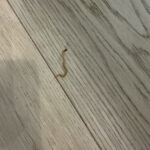
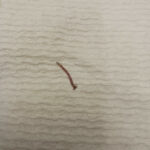

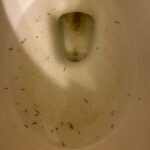
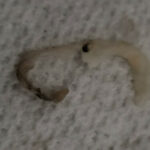
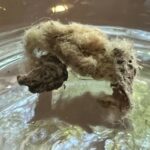

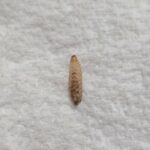


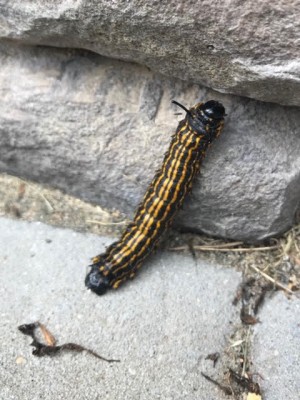


I have a work problem they are inside me my clothes my furniture my freezer help what can I do